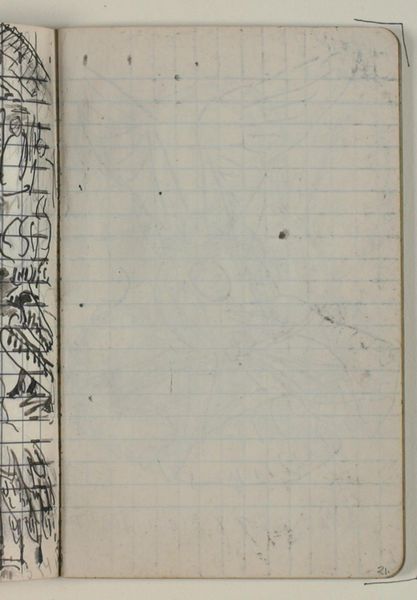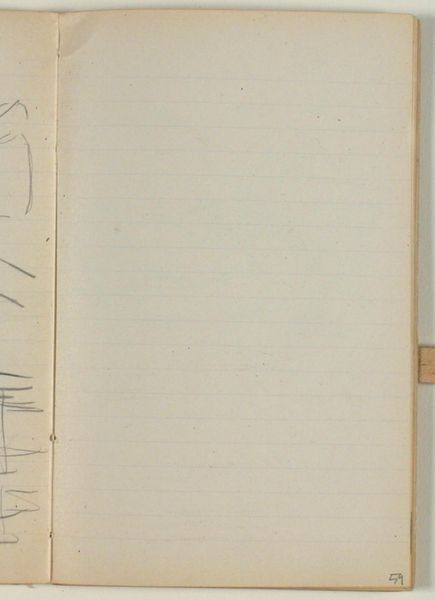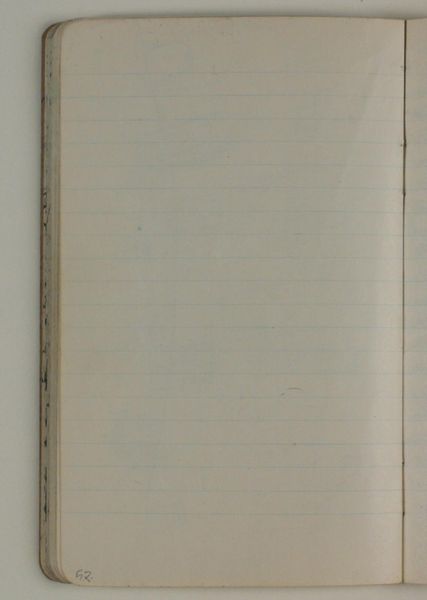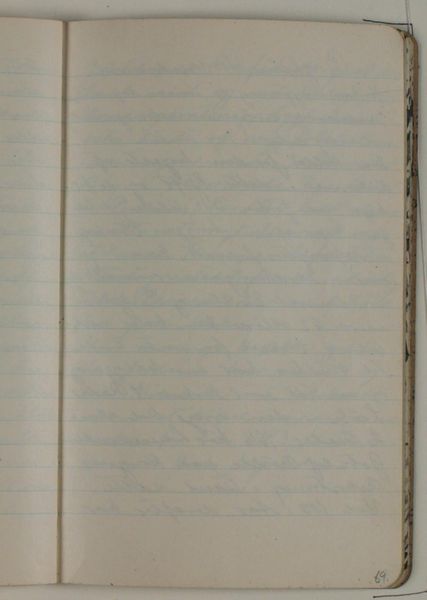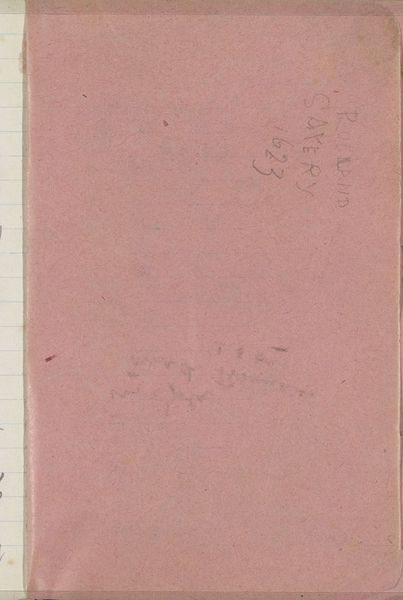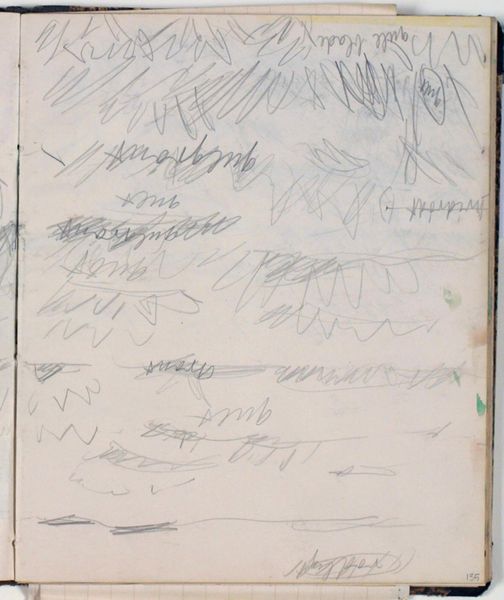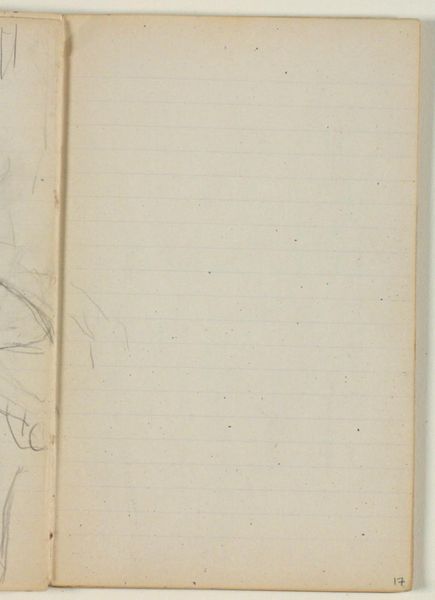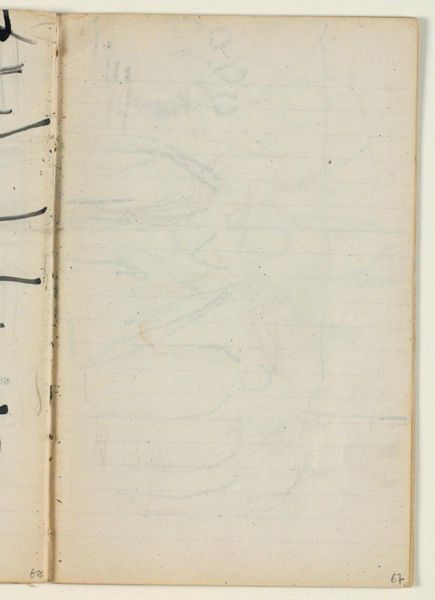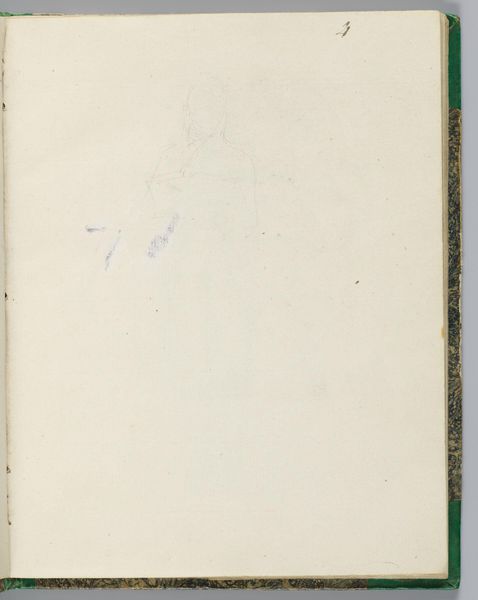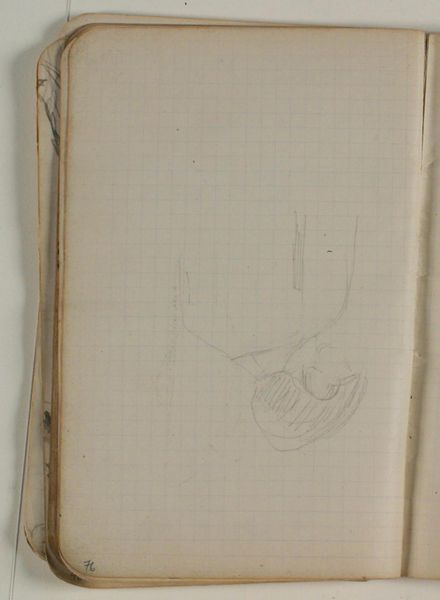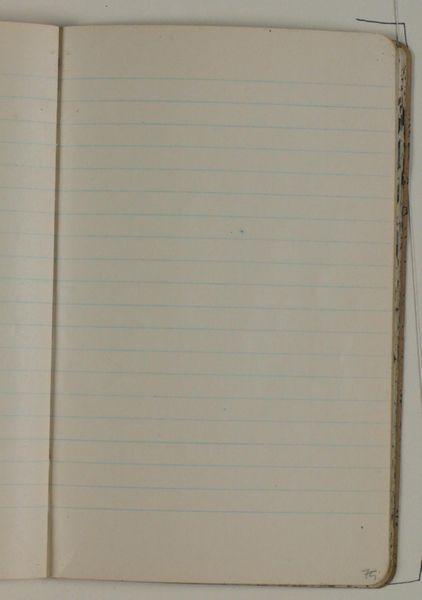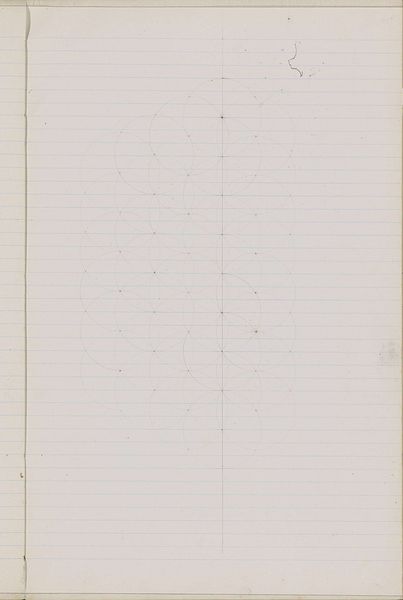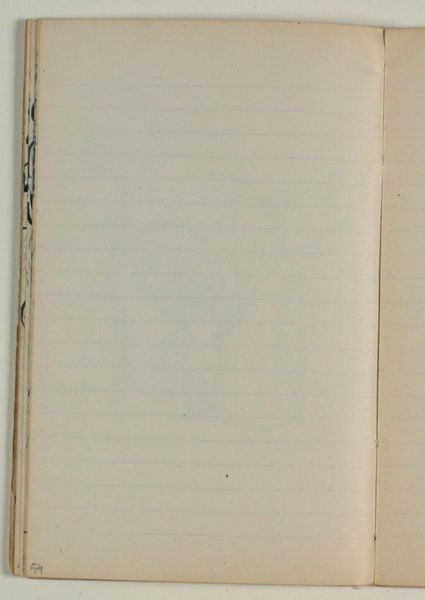
drawing, paper, pencil
#
drawing
#
paper
#
geometric
#
pencil
#
abstraction
Dimensions: 175 mm (height) x 109 mm (width) (monteringsmaal), 175 mm (height) x 109 mm (width) (bladmaal)
Curator: Welcome. We are standing before "Blank", a pencil drawing on paper made between 1933 and 1934 by Niels Larsen Stevns, currently residing here at the SMK. What’s your initial take? Editor: Immediately, it evokes a sense of process, almost accidental—it's like glimpsing the artist's raw thought processes on humble, lined paper. The open notebook, with its unfinished marks, feels so immediate and honest. Curator: Precisely. Those lines suggest the ordered world of the notebook, something controlled. On the opposing page we see geometric scribbles. I sense a personal visual language here, maybe representing his observations? Editor: Maybe, but for me, it raises questions about the value we assign to different forms of labor. Is a doodle in a notebook inherently less "art" than a finished painting? It’s just as crucial for understanding the artist’s overall production. What stories does the physical object, this notebook, tell? Who made the paper, the pencil? Where? Curator: A valid point! These symbols however, although quickly jotted down, might unlock broader understanding. Note the juxtaposition: organized lines, but free form strokes opposite. Perhaps a commentary on order versus chaos, intention versus instinct? It evokes Jungian archetypes... Editor: Or it reflects the real, lived conditions of an artist during the 1930s, navigating economic constraints. What materials were available? The lined paper is not neutral; it speaks to a specific social and economic reality. What does cheap paper tell us about access and availability to produce art? Curator: I admit that resonates. Though I also can’t ignore the almost meditative quality of repetitive mark-making, irrespective of materials, the potential for these marks to communicate universally. Perhaps something deeply human is at play beyond social circumstances. Editor: Well, it’s in those tensions – the universal *and* the specific, the grand and the granular - where I believe the richest meaning resides. The materials point to real-world limitations. I find this openness refreshing. Curator: Indeed. It compels one to reflect upon artistic intention, materiality, and visual echoes rippling through art history. Editor: Ultimately, viewing "Blank" urges us to look beyond surface appearances to uncover the unseen forces and human input behind it.
Comments
No comments
Be the first to comment and join the conversation on the ultimate creative platform.
